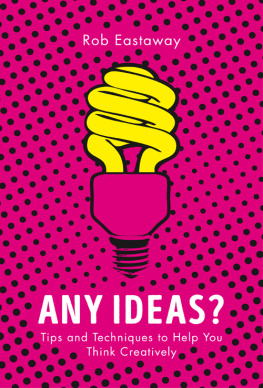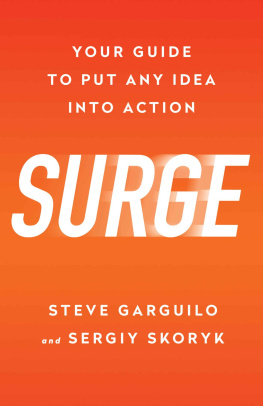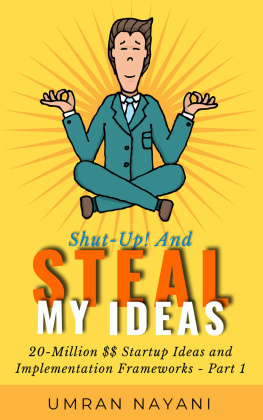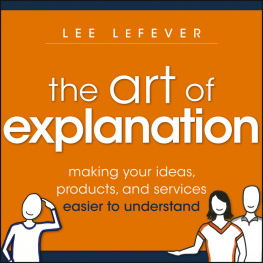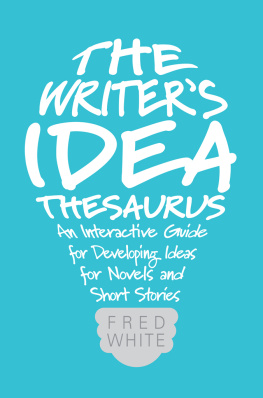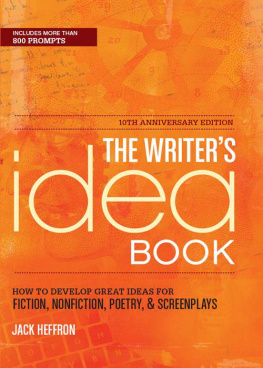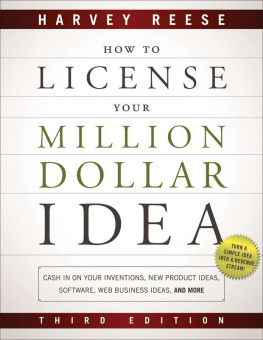HOW TO
GET IDEAS
HOW TO
GET IDEAS
Second Edition

Jack Foster
illustrations by Larry Corby

How To Get Ideas
Copyright 2007 by Jack Foster
All rights reserved. No part of this publication may be reproduced, distributed, or transmitted in any form or by any means, including photocopying, recording, or other electronic or mechanical methods, without the prior written permission of the publisher, except in the case of brief quotations embodied in critical reviews and certain other noncommercial uses permitted by copyright law. For permission requests, write to the publisher, addressed Attention: Permissions Coordinator, at the address below.

| Berrett-Koehler Publishers, Inc.
235 Montgomery Street, Suite 650
San Francisco, California 94104-2916
Tel: (415) 288-0260, Fax: (415) 362-2512
www.bkconnection.com |
Ordering information for print editions
Quantity sales. Special discounts are available on quantity purchases by corporations, associations, and others. For details, contact the Special Sales Department at the Berrett-Koehler address above.
Individual sales. Berrett-Koehler publications are available through most bookstores. They can also be ordered directly from Berrett-Koehler: Tel: (800) 929-2929; Fax: (802) 864-7626; www.bkconnection.com
Orders for college textbook/course adoption use. Please contact Berrett-Koehler:
Tel: (800) 929-2929; Fax: (802) 864-7626.
Orders by U.S. trade bookstores and wholesalers. Please contact Ingram Publisher Services, Tel: (800) 509-4887; Fax: (800) 838-1149; E-mail: customer.
service@ingrampublisherservices.com; or visit www.ingrampublisherservices.com Ordering for details about electronic ordering.
Berrett-Koehler and the BK logo are registered trademarks of Berrett-Koehler
Publishers, Inc.
Second Edition
Paperback print edition ISBN 978-1-57675-430-6
PDF e-book ISBN 978-1-60509-301-7
IDPF e-book ISBN978-1-60509-881-4
2010-2
Text design by Detta Penna
Illustration and cover design by Larry Corby
To the three bestideas
I ever had
My wife Nancy,
and my sons,
Mark and Tim
Contents
Preface
For seven years I helped teach a 16-week class on advertising at the University of Southern California. The class was sponsored by the AAAAAmerican Association of Advertising Agenciesand was designed to give young people in advertising agencies an overview of the profession they had chosen.
One teacher talked about account management. One teacher talked about media and research. And I talked about creating advertising.
I talked about ads and commercials, about direct mail and outdoor advertising, about what makes good headlines and convincing body copy, about the use of music and jingles and product demonstrations and testimonials, about benefits and type selection and target audiences and copy points and subheads and strategy and teasers and coupons and free-standing inserts and psychographics and on and on and on.
And at the end of the first year I asked the graduates what I should have talked about but didnt.
Ideas, they said. You told us that every ad and every commercial should start with an idea, one of them wrote, but you never told us what an idea was or how to get one.
Well.
So for the next six years I tried to talk about ideas and how to get them.
Not just advertising ideas. Ideas of all kinds.
After all, only a few of the people I taught were charged with coming up with ideas for ads and commercials; most were account executives and media planners and researchers, not writers and art directors. But all of themjust like you and everybody else in business and in government, in school and at home, be they beginners or veteransneed to know how to get ideas.
Why?
First, new ideas are the wheels of progress. Without them, stagnation reigns.
Whether youre a designer dreaming of another world, an engineer working on a new kind of structure, an executive charged with developing a fresh business concept, an advertiser seeking a breakthrough way to sell your product, a fifth-grade teacher trying to plan a memorable school assembly program, or a volunteer looking for a new way to sell the same old raffle tickets, your ability to generate good ideas is critical to your success.
Second, computer systems are doing much of the mundane work you used to do, thereby (in theory at least) freeing you upand indeed, requiring youto do the creative work those systems cant do.
Third, we live in an age so awash with information that at times we feel drowned in it, an age that demands a constant stream of new ideas if it is to reach its potential and realize its destiny.
Thats because informations real valueaside from helping you understand things bettercomes only when it is combined with other information to form new ideas: ideas that solve problems, ideas that help people, ideas that save and fix and create things, ideas that make things better and cheaper and more useful, ideas that enlighten and invigorate and inspire and enrich and embolden.
If you dont use this fortune of information to create such ideas, you waste it.
In short, theres never been a time in all of history when ideas were so needed or so valuable.
The first edition of this book contains most of what I told my students about ideas.
This second edition:
Contains two new chapters5, Rejoice in Failure, and 8, Team Up with Energythat were suggested by friends and by teachers and students who used the first edition as a textbook.
Updates some of the examples and references and quotations to make the book more current.
Is reorganized to make more clear the two parts of the book Part I: Ten Ways to Idea-Condition Your Mind, and Part II: A Five-Step Method for Producing Ideas.
Acknowledgments
Learned something about ideas from just about everybody I ever taught or worked with. Any attempt to remember and name them all would fail. A sincere but sweeping Thank you, everyone must therefore suffice.
Special thanks go to Tom Pflimlin, whose many suggestions helped me improve the first edition of this work; to Henry Caroselli and Mel Sant, whose many suggestions helped me improve this second edition; to Steven Piersanti and his staff, whose enthusiasm and knowledge and skill helped me transform a rough manuscript into a finished book, and a successful first edition into an even better second edition; and to my family, whose faith sustains me.

Introduction
What Is an Idea?
I know the answer. The answer lies within the heart of all mankind! What, the answer is twelve? I think Im in the wrong building.
Charles Schultz
I was gratified to be able to answer promptly, and I did. I said I didnt know.
Mark Twain
If love is the answer, could you please rephrase the question?
Lily Tomlin
Before we figure out how to get ideas we must discuss what ideas are, for if we dont know what things are its difficult to figure out how to get more of them.
Next page


